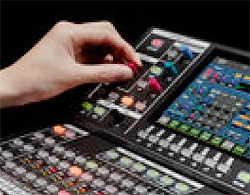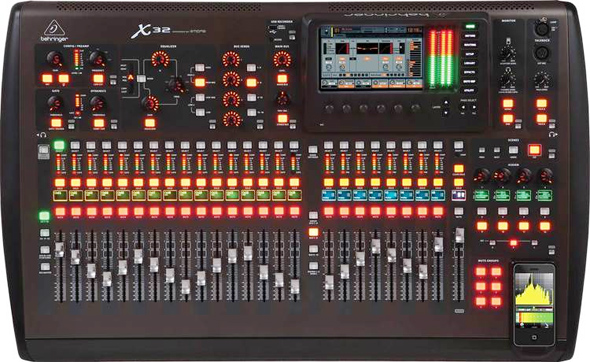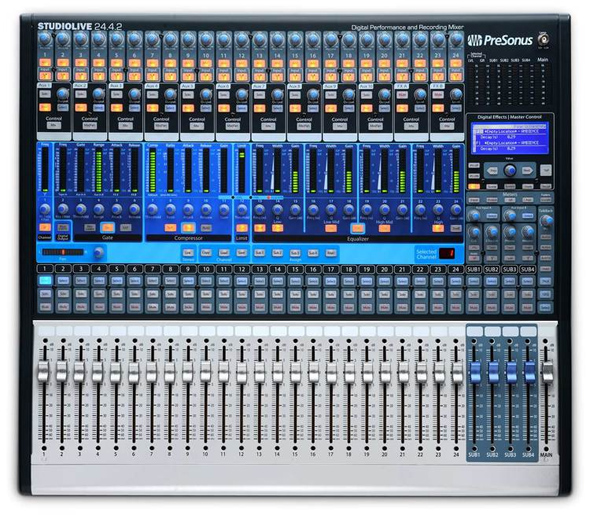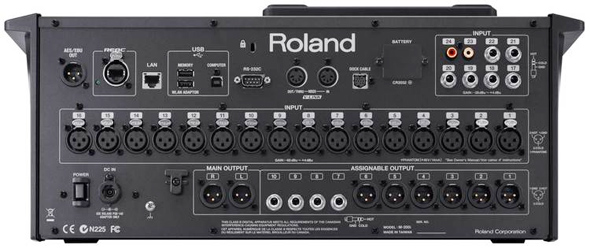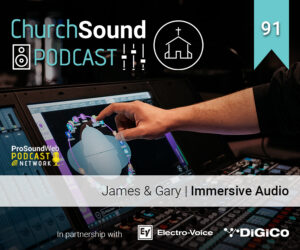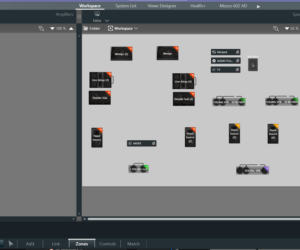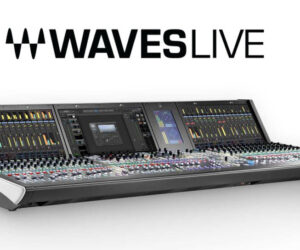Everyone wants to go digital for their audio mixing. Whether this is necessarily a good idea for every church is a topic we’ll tackle later.
For now, we’re going to look at three mixers that look like perfect fits for the small- to mid-sized church (200-800 seats or so). Two of these three mixers are fairly new—the Behringer X32 and the Roland M-200i. Meanwhile, the PreSonus StudioLIve 24.4.2 has been around a little bit longer and has a dedicated user base.
But how do they compare? Let’s find out. Note, this is a feature comparison only. At some point, I hope to get all three of them together for a sound comparison, but we’re going to operate under the assumption that they all sound good enough for this application.
In this series, I’m not looking to call a winner. I’m simply running through the feature set of each desk. The reality is that each of these will be right for someone, but it’s unlikely that each will be right for everybody.
Also note that these listings are done in chronological order and do not indicate any preferences. (The M-200i is the latest to be released, preceded by the X32 and then the StudioLive 24.4.2.)
With that said, let’s get on with it.
Work Surface
To start off, we’ll consider the work surface as that is how we’ll be interacting with the mixer most of the time.
M-200i: 16 motorized faders (configurable for input, output mixes, DCAs and user layers) plus 1 motorized master
X32: 16 motorized input faders, 8 motorized output faders, 1 motorized master
StudioLive: 24 non-motorized input faders, 4 non-motorized group fader, 1 non-motorized master fader
The lack of motorized faders are a deal-breaker for some, especially if you’re using the iPad app (which is rather good). Once you make any changes on the iPad, you have to use a “fader locate” mode to position the faders on the surface to match the current levels.
The M-200i is a small mixer; it’s able to be rack-mounted. As such, the control surface does not have a ton of controls on it. Each channel has dedicated mute, solo and select buttons; there are 8 buttons for selecting sends on fader mode (pressing 2 of them will select the matrix mixes); there are 8 user defined keys; 5 layer keys; about 20 buttons for selecting various operating sections and controlling the small LCD display, and a single encoder.
Though small, it’s easy to see and the navigation isn’t too hard. Each channel also has a 5-segment meter, while a larger meter keeps track of the L&R output. While sparse, it’s laid out well, and it is very easy to get around on.
The X32 is a larger mixer, so it has more dedicated controls. Each channel strip has the mute, solo and select buttons plus a color-coded (user assignable) digital scribble strip and a 5-segment meter. Three (3) buttons and 2 encoders adjust compression settings; a pair each of buttons and encoders control the gate; 3 encoders and 6 buttons mange EQ (4 of the buttons select the band you’re working on); 4 encoders and buttons allow for easy aux mixing, and a handful of other buttons and rotaries manage other tasks.
They also included user-definable rotaries with digital scribble strips to manage often adjusted parameters (reverb time, for example). You also have 6 UDKs. And we can’t forget the iPhone rest. The X32 also comes with a 7-inch color LCD (non-touch) with some encoders and buttons to navigate the interface. It’s a little busy, but not terribly so. I’ve played with it at trade shows and it’s not hard at all to get around on.
The StudioLive 24.4.2 is in between size-wise. The oddest thing about all the StudioLive mixers is the Fat Channel. Using 24 encoders and a bunch of buttons, you can adjust the EQ, dynamics and aux sends of any selected channel. It’s odd because the layout is horizontal and the EQ display is not anything like what we’re used to. I’ve mixed on them and it takes a while to become used to what you’re looking at. I give them points for creative packaging, but I’m not really crazy about it.
However, the StudioLive is the only one to offer a dedicated gain knob for each channel. The other two have one gain knob and you select channels to activate. Because so many of the functions on the StudioLive are multifunction, the surface is littered with buttons. The display is small and the interface is clumsy to navigate. It’s actually much more useful when attached to a computer running the editor software. Like an 01V from Yamaha, I wouldn’t want to mix without PC or (preferably) Mac control.
Input/Output
These mixers are more or less comparable in terms of channel count. Sort of.
The M-200i can mix up to 32 channels at a time, from a possible maximum of 64 inputs. The mixer has 16 recallable mic pres on the surface, plus another 8 line inputs. With the REAC port, you can additional stage racks for up to 40 additional inputs. In addition to the L&R outputs on XLR, you have an additional 10 assignable analog outs (6 XLR, 4 TRS) plus a 2-channel AES out.
Of course adding a stage box will add an additional 8-16 outs, depending on configuration. You can record via a USB-B connector on the back, or by plugging into the Ethernet jack and using Sonar (up to 40 channels).
The X32 has 32 “Midas Inspired” recallable mic preamps on board, along with another 6 line ins. You get 2 AES50 ports that will give you another 48 inputs and outputs. What’s interesting about this is that you could use Klark Teknik mic pres (which cost more than the X32). I mean, if you wanted to. For output connections, you get 16 analog outs (XLR), plus a stereo control room output set, and an AES stereo pair. They also include an additional 6 Aux outs on TRS.
A FireWire or USB interface port will give you 32 x 32 channels of recording and playback. According to the website, you can access up to 168 possible sources and destinations if you plug in everything. Thought that might be overkill for a board that can mix 32 of those 168 sources…
The StudioLive 24.4.2 looks a lot more like an analog console from the back. You have 24 non-recallable mic pres, each with a corresponding insert jack and a line input. You also get a pair of stereo aux inputs on TRS, Tape in and out on RCAs. On the output side, you get 10 aux outs on TRS, a main L&R on XLR, TRS and S/PDIF (and a mono for good measure). Via FireWire, two consoles can cascade together. Note that when this is done, you lose the ability to record. Which is kind of a bummer. It should also be noted that doing this does double your channel count to 48, but you gain no mix buses. Finally, two FireWire 400 jacks provide 32 channels of recording and 26 channels of playback.


